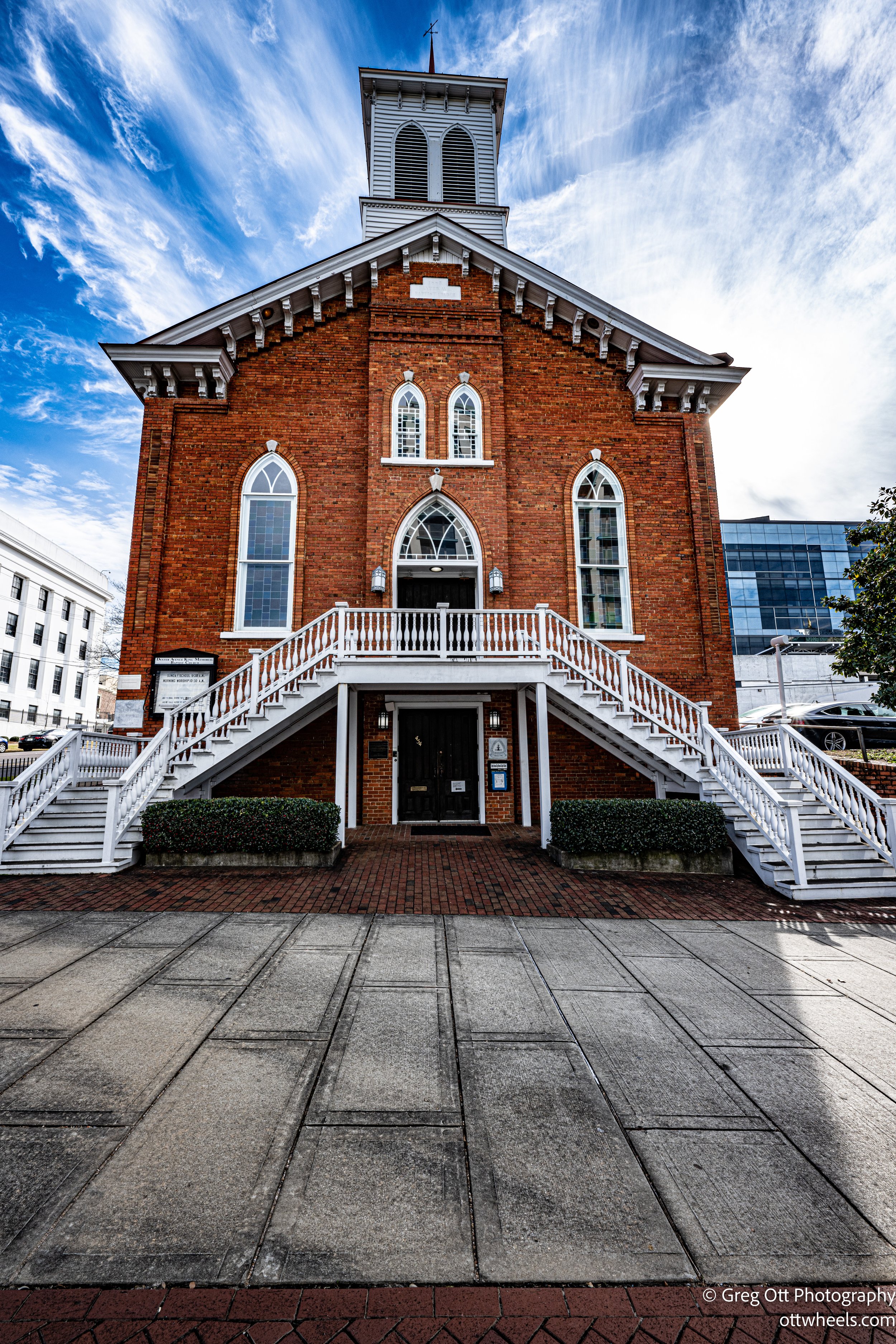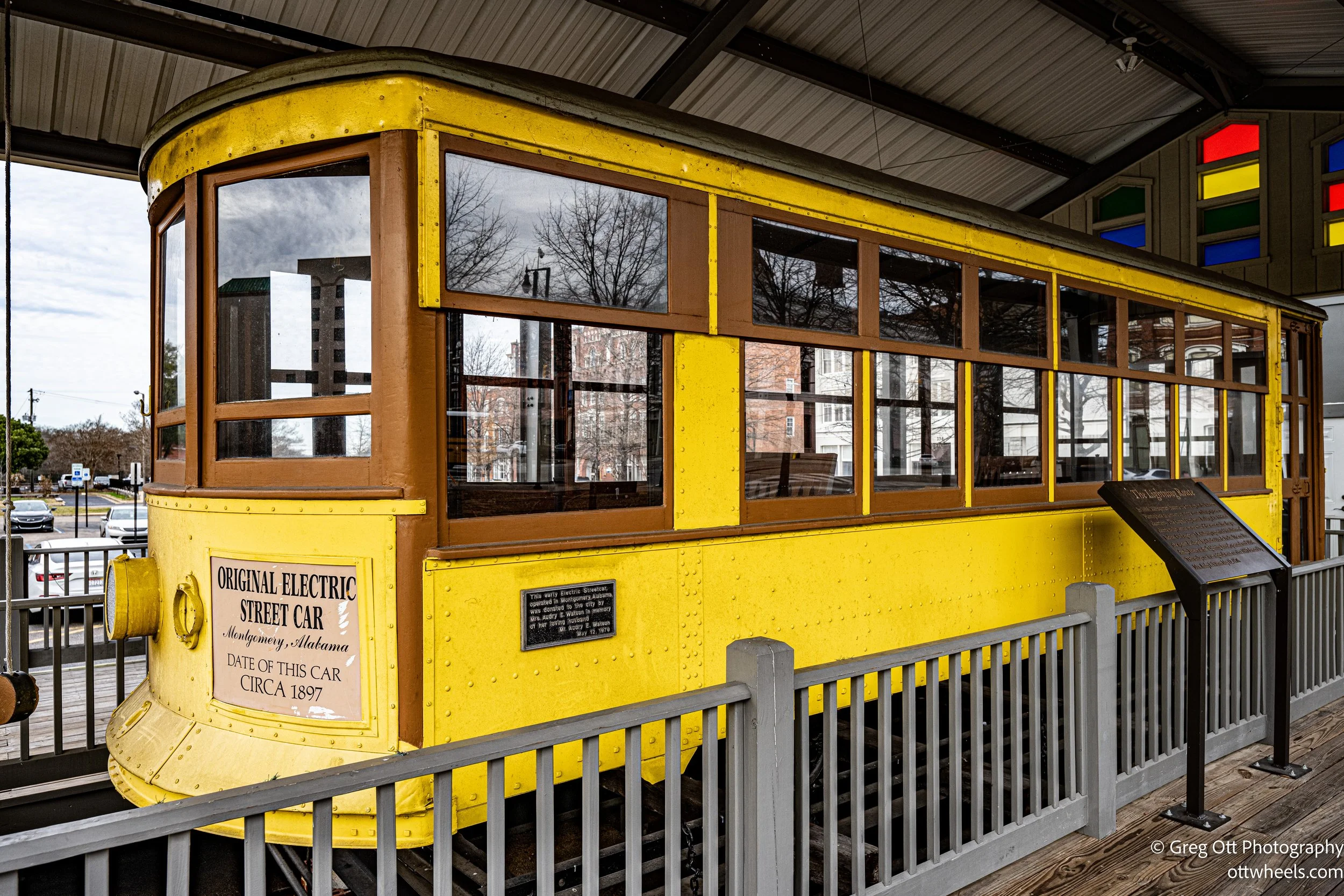Montgomery, Alabama - Day 1
I had initially intended to spend only a few hours in Montgomery, but after delving into the city's rich and storied history dating back centuries, I quickly realized that I would need to spend at least a couple of days there. After exploring the capital and visiting the visitors center, I knew I wanted to photograph the historical landmarks and immerse myself in the culture.
State House
The Alabama State Capitol is the former state capitol building of Alabama. The building was initially completed in 1851, and served as the first capitol building of the Confederate States of America from 1861-1865. The building was later used as the capitol of Alabama from 1866-1985. It was severely damaged by fire in 1849, and was rebuilt in 1851. The building is in the Greek Revival style and is the second-oldest state capitol building in the United States that still houses its original legislative chambers. The structure is a National Historic Landmark and is listed on the National Register of Historic Places.





Flags and Stones of Each State
On the east side of the capital building is a semi-circle of all 50 state’s flags. in front of each pole is a stone from each state. I took some photos of the stones but I would love to go back and get a photo of each stone and research the process of getting each stone from each state. There must be a record of which quarry was used in each state. I tried to find information on line but gave up after a couple of hours.
State House Indoors
As I walked the parameter of the State House, I realized that it was possible to do a self guided tour of the inside. Parts of the capital are still used as office space for various departments of government.
I really enjoyed the design of the building. The dome has many frescos depicting events in Alabama history. I also liked the brightness and colors around the dome. Another interest part of the building are the staircases and lighting.







The Wallaces
George Wallace was a politician from Alabama who served as the Governor of Alabama from 1963 to 1967 and 1971 to 1979. He is best known for his strong opposition to the Civil Rights Movement and his outspoken segregationist views. George Wallace's wife, Lurleen Wallace, also served as Governor of Alabama. She was elected in 1966, during her husband's first term as Governor. However, her tenure as Governor was cut short as she died of cancer in 1968. She was not a segregationist like her husband and did not publicly express the same views as him. Her campaign and governorship were more focused on issues such as education and poverty. Their portraits hang in the capital.


After the capital tour, I took the bike off the car and began to ride the streets. As I rode down the hill from the capital, I dropped into the visitor’s center. The two woman there were very helpful and provide a lot of feedback on the history of Montgomery.
MLK’s Baptist Church
The Dexter Avenue King Memorial Baptist Church, now known as the Dexter Avenue King Memorial Baptist Church Heritage Center, is located close to the capital building. It was the first church where Dr. Martin Luther King Jr. served as a pastor, from 1954 to 1960.
The church, built in 1877, has a rich history in the Civil Rights Movement, it was a central location for many of the events and meetings that led to the Montgomery Bus Boycott in 1955 and the Civil Rights Movement. Dexter Avenue was the main thoroughfare between the White House of the Confederacy and the Alabama State Capitol building and was the site of many civil rights demonstrations.
Dr. King was appointed as the pastor of the church in 1954, and he quickly became involved in the Civil Rights Movement, using the church as a base for organizing protests and boycotts. He also delivered many of his famous speeches at the church, including "Give Us the Ballot," which he delivered in 1957.
After King's departure, the church continued to be a important center for Civil Rights Movement, hosting leaders and activists such as Ralph Abernathy, Fred Shuttlesworth, and Rosa Parks. Today the church is open to visitors as a heritage center, preserving the legacy of the Civil Rights Movement and the role that the Dexter Avenue King Memorial Baptist Church played in it.



Rosa Park
The Rosa Parks statue downtown is a bronze statue that honors civil rights activist Rosa Parks. The statue is located near the spot where Parks was arrested for refusing to give up her seat on a Montgomery city bus in 1955. It is considered a historic landmark and a symbol of the Civil Rights Movement in Montgomery.
Rosa Parks is widely considered as an icon of the Civil Rights Movement, her refusal to give up her seat on the bus led to a boycott that lasted over a year and the eventual desegregation of the city's buses. The statue serves as a powerful reminder of Parks' bravery and the ongoing struggle for racial equality in the United States.



The Fountain Downtown
The fountain in downtown is located in the heart of the city and is a popular spot for locals and visitors alike. The fountain was first built in 1887 and was a gift to the city from a wealthy businessman, John T. Murphy, who wanted to beautify the city center. The fountain was designed in the Victorian style and was constructed of cast iron and bronze. It features a central statue of a woman holding a jug, surrounded by four smaller statues of children. The fountain was originally fed by a natural spring, but today it is powered by a modern pump system.
It is important to note that unfortunately, the location of this fountain has a dark history as well. Prior to the Civil War, Montgomery was a major hub for the domestic slave trade, and the area where the fountain now stands was once the site of a slave market. Enslaved people were brought here to be sold to the highest bidder, often being separated from their families and forced into a lifetime of labor and abuse. Today, the legacy of this history remains an important reminder of the atrocities of slavery and the ongoing fight for racial justice.
The Lightning Route
The "Lightning Route" was a streetcar line that was known for its speed and efficiency. It was first put into service in the 1890s. The "Lightning Route" was powered by electricity and was one of the first electric streetcar lines in the South. The "Lightning Route" was known for its sleek and modern streetcars and its high-frequency service. It was very popular among the citizens of Montgomery, as it provided a fast and efficient means of transportation to and from the city center. The "Lightning Route" was considered an important step in the modernization of Montgomery's transportation system, and it helped to spur the growth of the city's suburbs.
Buildings
As I rode around town, I stopped and read the plaques in front of buildings and waterways.







Legacy Museum
The Legacy Museum in Montgomery, Alabama is a powerful and moving tribute to the history of slavery and racial inequality in the United States. The museum, which opened in 2018, is located on a site that was once a warehouse for enslaved people, and it uses cutting-edge technology and immersive exhibits to tell the story of the millions of Africans and African Americans who were forced into bondage and the ongoing legacy of racism and discrimination that continues to this day. Photos were not allowed in inside the museum.
The museum's exhibits are divided into several sections, each of which explores a different aspect of the history of slavery and its aftermath. One section is dedicated to the transatlantic slave trade, which brought millions of Africans to the Americas between the 16th and 19th centuries. Another section examines the legacy of slavery and discrimination in the United States, such as Jim Crow laws, Civil Rights Movement and ongoing fight for racial justice. The Legacy Museum also features a section dedicated to the history of mass incarceration in the United States.
In addition to its exhibits, the Legacy Museum also offers a variety of educational programs and events such as guided tours, lectures, and workshops. It is an important institution that helps visitors understand the history of slavery and its ongoing legacy in the United States and encourages visitors to think critically about the ways in which these issues continue to affect our society today. It is part of a larger project called the National Memorial for Peace and Justice which is also located in Montgomery.
I was exhausted, both mentally and physically as I found my way back to the car. I drove back to the campsite at the KOA in East Montgomery and made dinner.


